Makivvik submitted a proposal to Heritage Canada for the project “Interacting with Inuit Place Names: New Social Media for Making Journeys, Stories and Maps”.
The project’s main objective was to verify existing and collect new, Inuit traditional place names and related stories in the Nunavik Marine Region (NMR). The creation of this project would officially recognize these places and make them available online to the public.
The project is built on existing knowledge from previous projects conducted/completed by Avataq Cultural Institute (Nunatop Project and Gazetteer of Inuit Place Names). To build upon past work, and to meet the needs and spirit of the provisions of NILCA (i.e., the review of traditional names within the Nunavik Marine Region and official recognition of these names), the project was to:
The project was funded primarily by Heritage Canada (through the Canada Interactive Fund Program) and Makivvik Corporation and was conducted as a partnership between Makivvik, Avataq Cultural Institute and local Inuit communities.
Project Activities
Project activities were divided into three main work packages:
Field maps included 221 topographic maps of the NMR at 1:50,000 scale and 19 maps of the interior at 1:250,000 scale.
Community consultations were conducted in 11 communities (Kangiqsualujjuaq, Kuujjuaq, Tasiujaq, Aupaluk, Kangirsuk, Quaqtaq, Kangiqsujuak, Salluit, Ivujivik, Akulivik and Puvirnituq) and included group and individual interviews. A total of 85 Inuit participated in the workshops, resulting in 126 hours of audio recordings.
Four communities have yet to be completed. Two communities, Ivujivik and Puvirnituq, have not been visited and two communities, Tasiujaq and Kangirsuk, have been partially completed.
Information Processing
As the project was primarily focused on the Inuit place names in the NMR, the verification of place names and data collection did not cover all of Nunavik. Here are some numbers on place name points that intersect the NMR (based on the NMR boundary based on non-LWIs and intermittent water and not the actual shoreline as the boundary, which would contain many more names).

Kuujjuaq
Head Office: Kuujjuaq
P.O. Box 179
Kuujjuaq, Quebec J0M 1C0
(819) 964.2925
1.877.625.4845
Montreal
1111 Dr. Frederik-Philips Blvd. 3rd Floor
St. Laurent, Quebec
H4M 2X6
(514)745.8880
1.800.361.7052
Quebec City
580 Grande-Allée E
suite 350
Québec (Québec)
G1R 2K2
(418) 522.2224
In collaboration with
